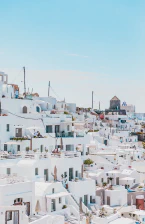Exploring Top Ten Active Volcanoes Globally

Witnessing the Majestic Power of Nature: A Journey to the World’s Top Active Volcanoes
When it comes to nature’s most impressive spectacles, nothing matches the sheer might of witnessing an active volcano up close. From glowing rocks tumbling downhill, to lava spilling from side vents, and ash clouds painting the sky, the experience is surreal and humbling. Welcome to a virtual journey of exploration, brought to you by Tour-agency.com. We’re taking you on a tour of the top 10 active volcanoes around the world that not only promise a breathtaking view but also an unforgettable travel experience.
The Dominant Pakaya: An Ongoing Spectacle
Rumbling away for over half a century, the cantankerous Pakaya volcano in Guatemala is the epitome of toughness. Most eruptions from this classic black stratovolcano are moderate Strombolian ones, giving you a safe vantage point to witness nature’s fiery spectacle. An easy day trip from Guatemala City or Antigua, Pakaya provides a majestic view, particularly on clear nights when the nearby Volcan de Fuego, another active volcano, often puts on a show of its own.
Walking Inside Nisiros: The Stirring Giant
Ever imagined standing atop the explosive powerhouse that created an entire island? In Nisiros, a Greek island, you can take a walk inside the caldera of the volcano, past bubbling mud and steaming fumaroles. It’s an awe-inspiring experience that’s well worth the short ferry ride from its more popular cousin, Coase. Imagine knowing that the magma chamber lies just a couple of miles beneath your feet!
Mount Stromboli: The Icon of Eruption
Mount Stromboli, the iconic Italian volcano, is synonymous with longevity and endurance. Erupting for over 2,000 years, including as recently as 2003, its endurance is so formidable that the term ‘Strombolian’ is used to describe moderate, continuous volcanic eruptions. After a ferry or hydrofoil ride to the island, a guided hike will take you up the mountain to savor spectacular sea views. But the real stars are Stromboli’s simmering craters and the fiery displays that often accompany eruptions.
Kalimutu: A Colorful Spectacle
Kalimutu in Indonesia doesn’t spew ash or spit fire, but its activity manifests in a beautiful and unusual manner: tri-colored crater lakes that change colors according to the volcano’s moods. The process is due to variations in volcanic gas and rainfall, creating a volcanic landscape that looks like something out of a fantasy novel.
Mount Vesuvius: A Lesson from History
The eruption of Mount Vesuvius in 79 AD, which buried the Roman city of Pompeii, is arguably the most famous volcanic event in history. Today, steam still rises from the crater’s vents, and the mountain serves as a popular hiking destination with awe-inspiring views over the Bay of Naples.
White Island: Intimacy with the Beast
Daring explorers looking for an up-close and personal experience with an active volcano need look no further than New Zealand’s White Island, or Fakari. With its rising ram and boiling acid lake in the crater’s heart, you can walk into the very heart of the beast, experiencing bubbling mud, sulfur chimneys, and steaming vents along the way.
The Fiery Eye of Nyiragongo
Deep in the Virunga National Park in the Democratic Republic of the Congo, the ancient caldera of Nyiragongo casts an ominous, red-eyed gaze towards the heavens. Brave adventurers who ascend the challenging, high-altitude rocky incline are rewarded with an up-close view of the world’s deepest and runniest lava lake.
Kawah Ijen: The Volcano Superhero
Indonesia’s Kawah Ijen is a sight to behold. By day, it’s a beautiful turquoise lake shrouded in sulfuric clouds, but come nightfall, the crater transforms into an otherworldly spectacle of blue fire as sulfuric gas emerges and ignites.
Home of the Fire Goddess: Kilauea, Hawaii
Kilauea in Hawaii is a volcano with all the trimmings: lava tubes, lava fountains, and lava rivers. Located within the Hawaii Volcanoes National Park on Big Island, it’s been continually active since 1983 and according to local lore, is home to the fire goddess Pele.
The Roaring Mount Yasur
Last but not least, we have Mount Yasur in Tana Vanuatu. Continually erupting for hundreds of years, Yasur is the planet’s most accessible active volcano. From the top, you can witness lava bombs soaring into the sky, making for a remarkable experience.
Indeed, each of these volcanoes offers a unique, awe-inspiring spectacle, ensuring an unforgettable journey. As with any adventure, however, remember to be respectful of the local culture and the environment, and always prioritize safety. Enjoy the tour!
Conclusion
The beauty of our world is a tapestry of diverse elements, each contributing to the narrative of its magnificence. Our planet’s fiery inhabitants, active volcanoes, are no exception. These majestic, formidable figures serve as stark reminders of the Earth’s raw power and the ceaseless dynamism underlying our existence. Visiting them isn’t merely a chance to marvel at the spectacle of erupting lava or smoky craters, but an opportunity to connect with the primal essence of nature itself.
A journey across the globe, encountering these living, breathing colossi in Guatemala, Greece, Italy, Indonesia, Italy again, New Zealand, the Democratic Republic of Congo, and even in the USA, is an adventure in its own right. Each volcano, with its unique personality and story, beckons us with the promise of a unique spectacle and a novel perspective. The intimidating Pakaya, the awe-inspiring Nisiros, the iconic Mount Stromboli, the colorfully mysterious Kalimutu, the historical Mount Vesuvius, the dangerously beautiful White Island, the fierce eye of Nyiragongo, the dual persona of Kawah Ijen, the goddess home Kilauea, and the accessible Mount Yasur – each provides a thrilling chapter in this grand narrative of nature’s might.
However, along with the breathtaking beauty and the promise of adventure, these active volcanoes underscore the need for respect and caution. The raw power of nature is beautiful, but it can also be destructive. The balance is delicate, and as travelers, our responsibility extends beyond admiration and excitement. It’s about respecting the natural world, acknowledging its power, understanding its signals, and prioritizing safety. It’s about leaving a minimal footprint and ensuring that these spectacular wonders can be enjoyed by future generations.
In the end, as we traverse these volcanic landscapes, we don’t merely witness a spectacle; we partake in a dialogue with the Earth, a conversation etched in molten rock and roaring flames. It’s a dialogue that reveals the age-old secrets of our planet, the same secrets that shape the mountains, form the islands, and even, in some measure, dictate the course of human history. Embarking on this volcanic journey, therefore, isn’t just about seeking the thrill of adventure or ticking off another item on the bucket list; it’s about immersing ourselves in the grand, ever-evolving story of our planet - a story that’s as spectacular as it is humbling.
1. What is the best time to visit these active volcanoes?
The best time to visit these volcanoes largely depends on the specific location and its climate patterns. For instance, Mount Vesuvius in Italy and Mount Stromboli are best visited during the spring or fall when the weather is mild. Hawaii’s Kilauea, being in a tropical climate, is accessible year-round, although it might be more crowded during winter holidays. Always remember to check the current activity status of the volcano before planning your visit.
2. Are there specific safety precautions to take while visiting active volcanoes?
Yes, safety is paramount when visiting active volcanoes. Always stay within designated viewing areas and follow all guidelines provided by local authorities or guides. Wear suitable footwear for rough terrain and carry necessary supplies such as water, sunscreen, and protective eyewear. Moreover, it’s essential to check for any warnings or updates about volcanic activity before and during your visit.
3. How can I prepare for a trip to an active volcano?
A trip to an active volcano typically involves hiking and being outdoors for extended periods. Therefore, physical preparation, such as building up your stamina through regular exercise, is beneficial. Equip yourself with protective clothing, suitable footwear, and other necessary gear. Familiarize yourself with the area you’ll be visiting, including its climate, terrain, and any potential risks. Most importantly, ensure you’re aware of the safety guidelines related to volcanic visits.
4. What makes visiting active volcanoes a unique experience?
Visiting an active volcano offers a rare glimpse into Earth’s raw power and the dynamic processes that shape our planet. From witnessing eruptions and flowing lava to standing atop a volcanic peak, the experiences are as educational as they are thrilling. Furthermore, each volcano carries its unique story and cultural significance, adding depth to the overall experience.
5. Is it possible to take guided tours to these volcanoes?
Yes, guided tours are available for most active volcanoes and are often recommended, especially for first-time visitors. Guides not only provide valuable information about the volcano and its activity but also ensure your safety during the visit. They are familiar with the terrain and can help navigate any sudden changes due to volcanic activity. Whether it’s a boat ride to the Stromboli Island or a hike up to the summit of Mount Vesuvius, guided tours can enhance your experience and ensure a safe adventure.






